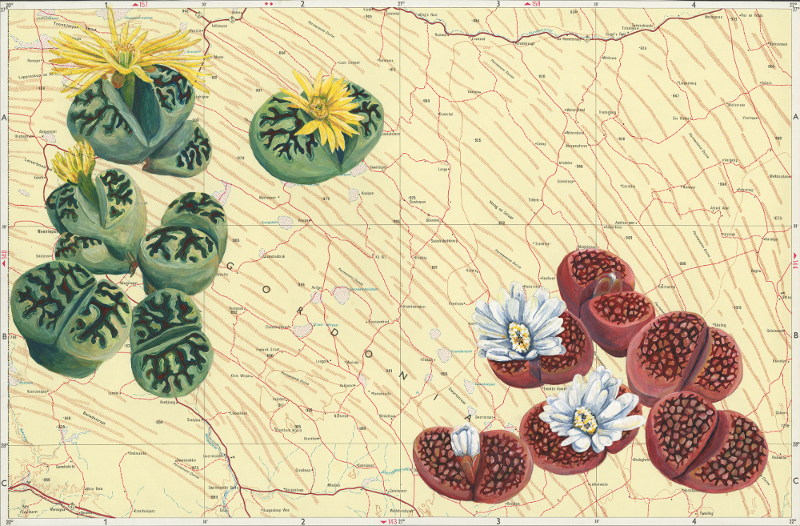Stone plants
Lithops is a genus of succulent plants in the ice plant family, native to southern Africa. The name is from Ancient Greek and means “stone face”, and they are also often known as stone plants or living stones.
They are incredibly well adapted little plants. The markings on their epidermal windows serve to camouflage them and vary according to the species and local habitat. Underneath the window, the tissue is translucent to allow sunlight to pass through to the protected green photosynthetic lining at the base.
Stone plants are some of the most morphologically diverse families of plants, and yet each species is very localised to its particular habitat. The two species shown here are Lithops dorotheae (left), found in a small area near Pofadder, and Lithops hallii ochracea (right) found near Upington, both in the Northern Cape of South Africa.
I’ve always been fascinated by these plants, from hearing stories about my mum when she was a student at Kirstenbosch going on expeditions to find them in the succulent Karoo, lying on the ground and squinting to make them out, to almost doing my Masters in Genetics at UCT on the evolutionary radiation of the genus, to including an activity in a Gr 7 Natural Sciences workbook on the adaptation of stone plants (perhaps a little advanced!).
Lithops dorotheae and Lithops hallii ochracea
Original artwork: available
